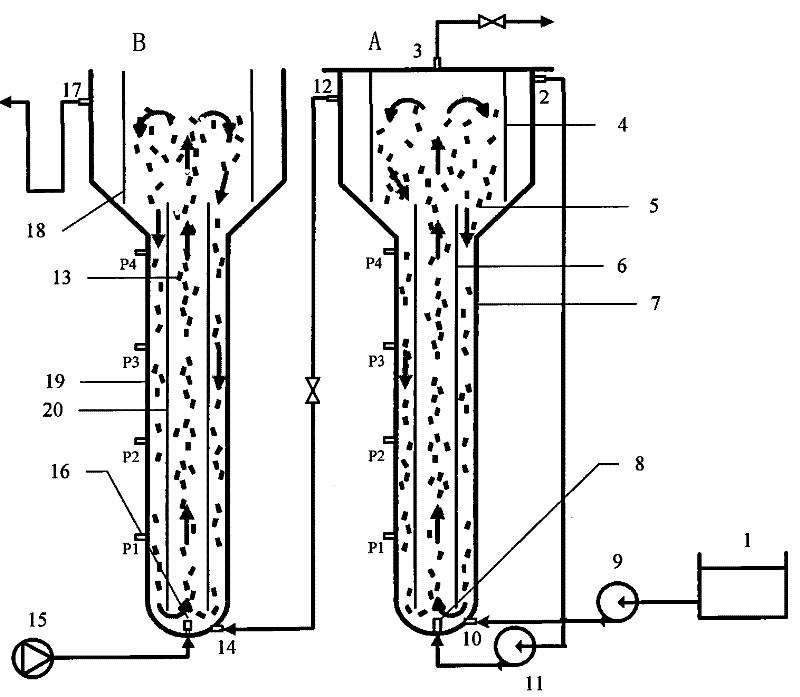Fluidized bed treatment device for printing and dyeing wastewater
A printing and dyeing wastewater and treatment device technology, applied in the field of environmental technology and water treatment, can solve the problems of low three-phase separation efficiency, excessive shedding of biofilm, high cost of anaerobic reaction, etc., to improve carrier loss, solve easy clogging, and quickly The effect of efficient degradation
- Summary
- Abstract
- Description
- Claims
- Application Information
AI Technical Summary
Problems solved by technology
Method used
Image
Examples
Embodiment
[0019] The fluidized bed treatment device for printing and dyeing wastewater of the present invention is used to treat wastewater containing various dyes with a total concentration of 100 mg / L, a COD of 1000 mg / L, and an initial pH of 7.5. The operating parameters of the fluidized bed are: the circulating water flow rate of the anaerobic fluidized bed is 70L / h, the aerobic aeration rate is 0.4m3 / h, and the total hydraulic retention time is 30 hours. The effluent COD removal rate reaches 94.3%, and the chromaticity removal rate reaches 87.5%. The data show that printing and dyeing wastewater can be treated quickly and thoroughly by using anaerobic-aerobic combined biological fluidized bed.
PUM
| Property | Measurement | Unit |
|---|---|---|
| diameter | aaaaa | aaaaa |
Abstract
Description
Claims
Application Information
 Login to View More
Login to View More - R&D
- Intellectual Property
- Life Sciences
- Materials
- Tech Scout
- Unparalleled Data Quality
- Higher Quality Content
- 60% Fewer Hallucinations
Browse by: Latest US Patents, China's latest patents, Technical Efficacy Thesaurus, Application Domain, Technology Topic, Popular Technical Reports.
© 2025 PatSnap. All rights reserved.Legal|Privacy policy|Modern Slavery Act Transparency Statement|Sitemap|About US| Contact US: help@patsnap.com


